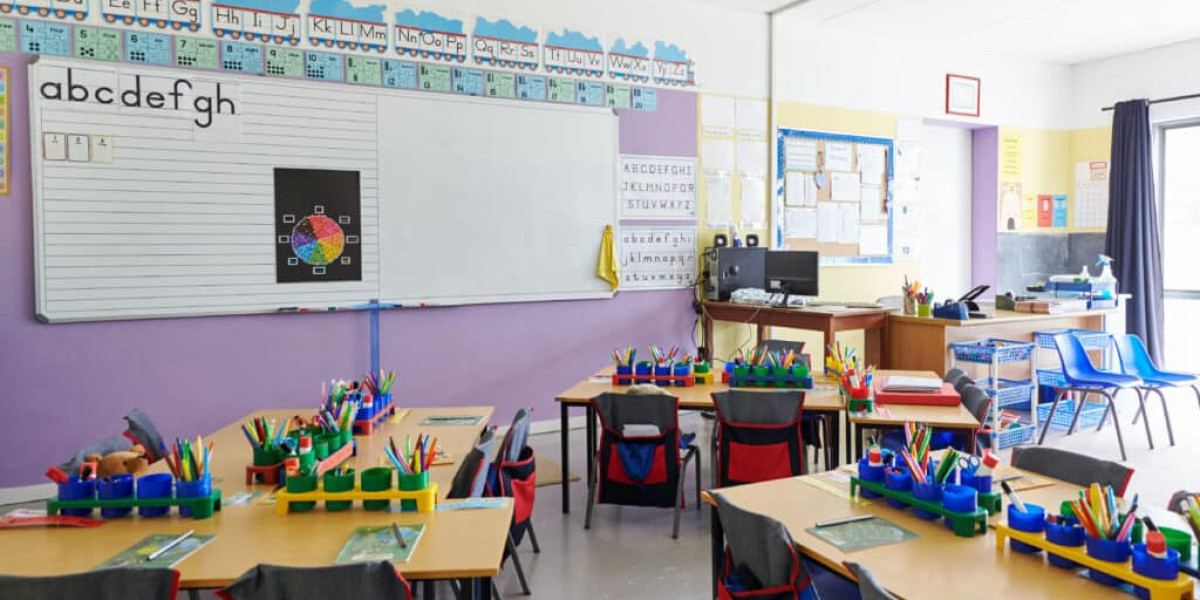A well-organized classroom serves as the foundation for effective teaching and meaningful learning. Research shows that students perform better in structured environments where materials are accessible, spaces are clearly defined, and systems run smoothly. When everything has its place, teachers can focus on what matters most: inspiring and educating their students.
This comprehensive guide will walk you through proven strategies for creating an organized, efficient, and safe classroom environment. From optimizing your physical layout to establishing sustainable systems for materials management, you'll discover practical solutions that work for elementary, middle school, and high school settings alike.
Optimizing Classroom Layout for Maximum Efficiency
Your classroom layout directly impacts student engagement, behavior, and learning outcomes. A thoughtfully designed space promotes collaboration when needed and focus when required.
Arranging Desks for Different Activities
The traditional rows of desks facing forward aren't always the most effective arrangement. Consider these flexible seating options:
Collaborative clusters work well for group projects and discussions. Arrange desks in groups of four to six, ensuring each student can see the board without straining. This setup encourages peer learning and makes it easier for you to circulate and provide individual support.
U-shaped arrangements facilitate whole-class discussions and allow you to maintain eye contact with every student. This formation works particularly well for literature circles, Socratic seminars, and interactive lessons where student participation is crucial.
Flexible zones accommodate different learning styles and activities. Create areas with standing desks, floor cushions, or traditional seating. This variety helps students find their optimal learning position and can reduce restlessness.
Creating Defined Learning Zones
Designate specific areas for different activities to help students understand expectations and transitions:
A quiet reading corner with comfortable seating and good lighting encourages independent reading. Stock this area with a variety of books at different reading levels and include soft furnishings like bean bags or floor cushions.
A technology station keeps devices organized and accessible. Include charging stations, headphone storage, and clear guidelines for device use. This centralized approach prevents technology from becoming scattered throughout the room.
Hands-on learning areas work well for science experiments, art projects, or manipulative-based math activities. Ensure these spaces have easy access to water, adequate ventilation, and appropriate surfaces for messy activities.
Maximizing Space with Smart Storage Solutions
Effective storage solutions keep your classroom tidy while ensuring materials remain accessible. File & storage cabinets serve as the backbone of classroom organization, providing secure space for important documents, student work, and teaching materials.
Vertical storage makes use of wall space without cluttering floor areas. Install shelving units, hanging organizers, and wall pockets to store frequently used items at eye level. Label everything clearly so students can help with classroom maintenance.
Mobile storage cards offer flexibility for teachers who move between classrooms or need to rearrange frequently. These carts can hold daily supplies, project materials, or specific subject resources.
Student cubbies or mailboxes give each student a designated space for personal items and assignments. This system reduces lost homework and helps students take ownership of their belongings.
Organizing Teaching Materials and Supplies
An efficient system for managing teacher and classroom supplies saves time, reduces stress, and ensures you're always prepared for lessons.
Implementing Effective Filing Systems
Digital and physical filing should work together seamlessly. Create parallel filing systems where digital lesson plans correspond to physical materials stored in the same organizational pattern. Use consistent naming conventions and color-coding across both systems.
Student work management requires a systematic approach. Establish separate folders for current assignments, completed work awaiting return, and samples for assessment purposes. Consider using file folders with students' names or numbers for quick identification.
Resource categorization by subject, unit, or frequency of use helps you locate materials quickly. Store frequently used items in easily accessible locations, while seasonal or specialized materials can be kept in higher or less convenient storage areas.
Streamlining Inventory Management
Supply monitoring prevents last-minute shortages that disrupt lessons. Create a simple checklist of essential items and review it weekly. Include basic supplies like pencils, paper, markers, and any subject-specific materials your curriculum requires.
Bulk storage organization keeps larger quantities of supplies organized without overwhelming daily workspace. Use clear containers with labels indicating contents and quantity. This system helps you see when supplies are running low and makes inventory checks more efficient.
Student supply contributions can supplement classroom resources when managed thoughtfully. Create a classroom wish list and update it regularly. Be specific about brands or types when quality matters for instructional purposes.
Utilizing Teacher and Classroom Supplies Effectively
Daily supply stations keep essential items within reach during instruction. Set up caddies with pens, sticky notes, tape, and other frequently needed items near your main teaching areas. Having duplicates prevents interruptions when you move around the room.
Subject-specific organization helps when you teach multiple subjects or have departmentalized instruction. Use different colored bins or labels for each subject area, making transitions between lessons smoother and more efficient.
Shared resource management works well for expensive or specialized items. Create a check-out system for items like calculators, microscopes, or art supplies that students use temporarily. This prevents loss and ensures fair access for all students.
Maintaining Cleanliness and Hygiene Standards
A clean classroom environment supports health, learning, and pride in the learning space. Establishing clear systems makes maintenance manageable for both teachers and students.
Selecting Appropriate Cleaning Products
Multi-purpose cleaners handle most classroom cleaning needs while reducing the number of products you need to store and manage. Choose products that are effective against germs but safe for use around children. Read labels carefully and store all cleaning products securely.
Specialized cleaning solutions may be necessary for specific situations. Art rooms might need solvents for paint cleanup, while science classrooms require solutions for equipment sterilization. Keep Safety Data Sheets (SDS) for all chemical products and ensure proper ventilation when using them.
Student-safe options allow children to help with classroom maintenance. Provide disinfecting wipes for desk cleaning and paper towels for spill cleanup. Teaching students to clean up after themselves builds responsibility and keeps the classroom tidy throughout the day.
Establishing Cleaning Schedules
Daily maintenance tasks keep the classroom functional and pleasant. Create a simple checklist that includes wiping down surfaces, emptying trash, and organizing materials. Assign age-appropriate tasks to students as part of their classroom responsibilities.
Weekly deep cleaning addresses areas that don't need daily attention but shouldn't be neglected. Schedule time for organizing storage areas, sanitizing shared materials, and checking supply levels. Use this time to assess what's working in your organizational systems and what needs adjustment.
Seasonal cleaning projects help reset the classroom environment periodically. Use school breaks to reorganize storage areas, refresh bulletin boards, and deep clean areas that are difficult to access during regular instruction.
Utilizing Gloves & Glove Dispensers
Health and safety protocols often require gloves for various classroom activities. Gloves & glove dispensers provide easy access while maintaining hygiene standards. Install dispensers at convenient locations near sinks, art areas, or science stations.
Activity-specific glove use protects both teachers and students during messy projects, food preparation, or when handling potentially contaminated materials. Teach students proper glove usage, including how to put them on and remove them safely.
Storage and accessibility considerations ensure gloves remain clean and available when needed. Wall-mounted dispensers save counter space and keep gloves at an appropriate height for users. Choose dispensers that protect gloves from dust and moisture.
Electrical Safety and Battery Management
Classroom technology requires careful attention to electrical safety and power management. Proper organization prevents hazards while keeping devices functional and accessible.
Safe Use of Batteries and Electrical Supplies
Battery storage and organization prevents leakage, extends battery life, and ensures devices work when needed. Store batteries and electrical supplies in a cool, dry place away from direct sunlight. Use a battery organizer or labeled containers to separate different types and sizes.
Device charging management prevents overloading circuits and reduces fire hazards. Establish designated charging areas with appropriate surge protection. Teach students to handle charging cables properly and report any damaged equipment immediately.
Electrical safety education should be part of your classroom management routine. Show students how to identify damaged cords, explain why water and electricity don't mix, and establish clear rules about who can plug in or unplug devices.
Organizing Electrical Cords and Devices
Cord management systems prevent tripping hazards and equipment damage. Use cord organizers, cable ties, or cord covers to keep wires neat and out of walkways. Label cords at both ends so you can easily identify which device each cord serves.
Device storage solutions protect expensive equipment while keeping it accessible for instruction. Use locking cabinets for valuable items and ensure adequate ventilation for devices that generate heat. Create a check-out system for portable devices to track their location and condition.
Power strip placement should prioritize safety and functionality. Position power strips off the floor to prevent water damage and ensure they're easily accessible for maintenance. Avoid daisy-chaining power strips, which can create fire hazards.
Building Systems That Last All Year
Creating an organized classroom isn't a one-time task—it requires ongoing attention and periodic adjustments. The most successful organizational systems grow and adapt with your teaching needs and student populations.
Student involvement in maintaining classroom organization builds ownership and life skills. Assign classroom jobs that rotate regularly, teaching students different aspects of organization and maintenance. When students help maintain systems, they're more likely to respect and follow them.
Regular evaluation and adjustment keeps your systems effective as needs change throughout the school year. Schedule monthly reviews of what's working and what isn't. Be willing to modify systems that aren't serving your classroom community effectively.
Documentation of successful strategies helps you replicate what works and share ideas with colleagues. Take photos of effective organization solutions and keep notes about what works for specific activities or times of year. This documentation becomes invaluable when setting up future classrooms or helping other teachers.
The time invested in classroom organization pays dividends throughout the school year. When students know where to find materials, when cleaning supplies are readily available, and when technology works reliably, learning can flourish. Start with one area at a time, involve your students in the process, and remember that the best organizational system is the one that works consistently for your specific teaching situation.
Your organized classroom becomes a model of the life skills you want your students to develop. By showing them how thoughtful organization supports learning and productivity, you're teaching lessons that extend far beyond academic content.








